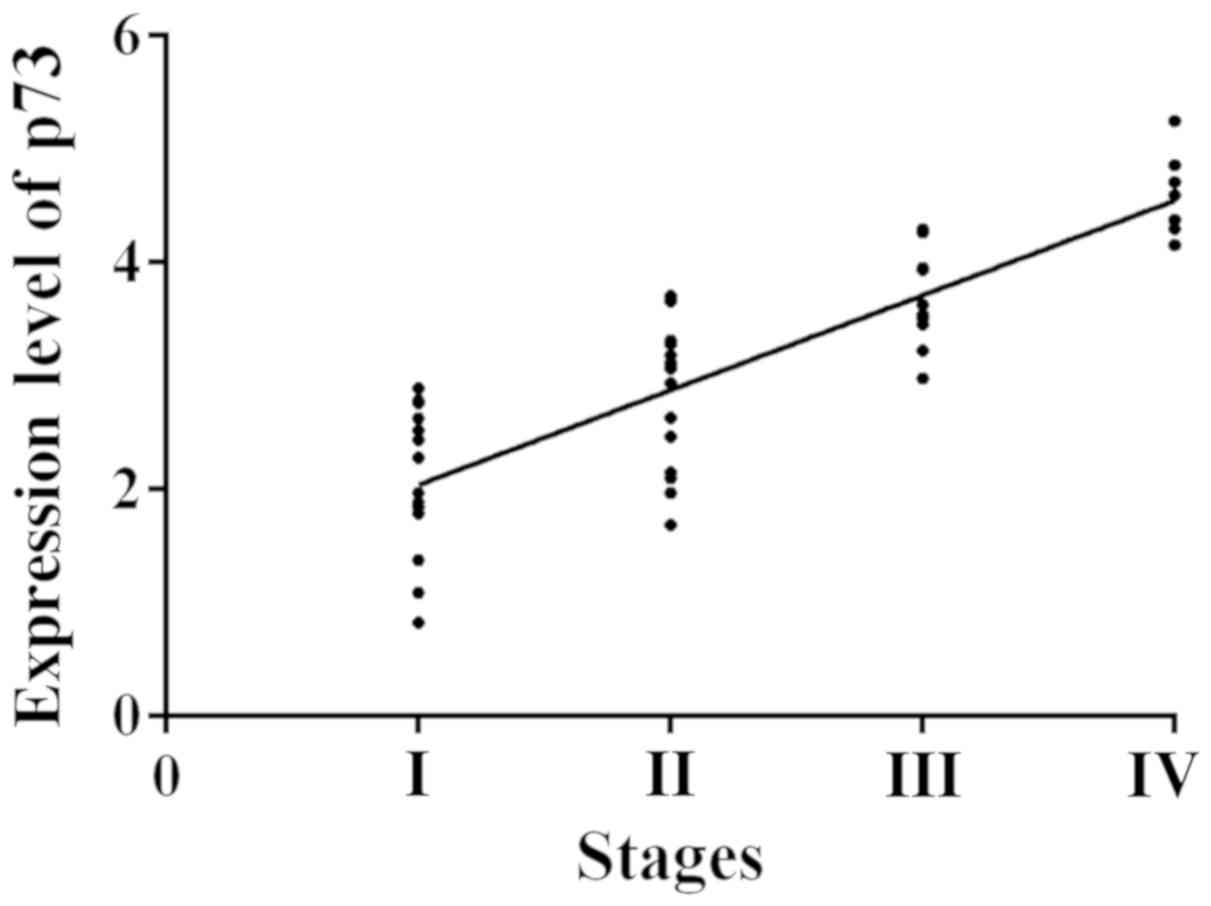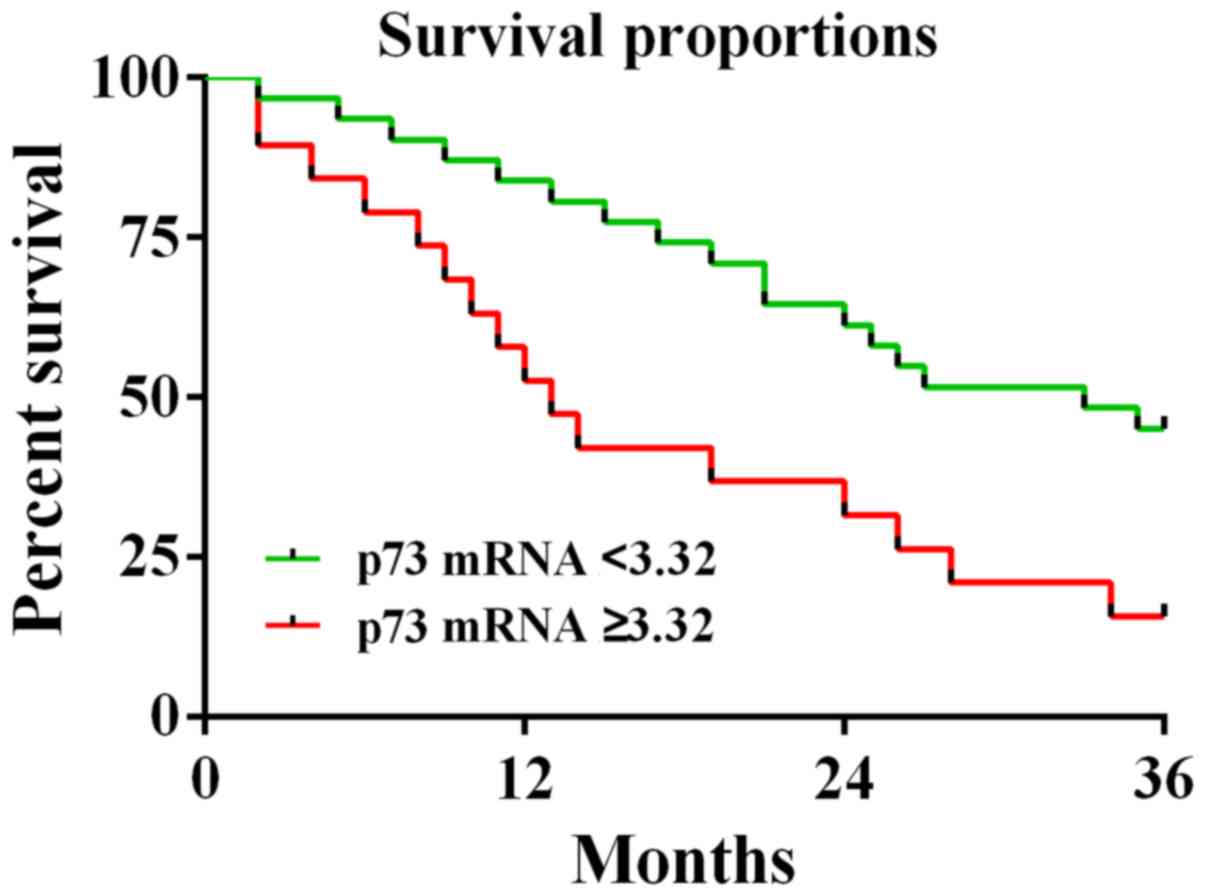|
1
|
Saltzman AF, Carrasco A Jr, Weinman J,
Meyers ML and Cost NG: Initial imaging for pediatric renal tumors:
An opportunity for improvement. J Urol. 199:1330–1336. 2018.
View Article : Google Scholar : PubMed/NCBI
|
|
2
|
Bozlu G and Çıtak EÇ: Evaluation of renal
tumors in children. Turk J Urol. 44:268–273. 2018. View Article : Google Scholar : PubMed/NCBI
|
|
3
|
Tian F, Yourek G, Shi X and Yang Y: The
development of Wilms tumor: From WT1 and microRNA to animal models.
Biochim Biophys Acta. 1846:180–187. 2014.PubMed/NCBI
|
|
4
|
Zhang Y, Young A, Zhang J and Chen X: P73
tumor suppressor and its targets, p21 and PUMA, are required for
Madin-Darby canine kidney cell morphogenesis by maintaining an
appropriate level of epithelial to mesenchymal transition.
Oncotarget. 6:13994–14004. 2015.PubMed/NCBI
|
|
5
|
Kurian JJ, Jehangir S and Korula A:
Multiloculated cystic renal tumors of childhood: Has the final word
been spoken? J Indian Assoc Pediatr Surg. 23:22–26. 2018.
View Article : Google Scholar : PubMed/NCBI
|
|
6
|
Cutruzzolà F, Avigliano L and Candi E: p73
keeps metabolic control in balance. Cell Cycle. 13:179–180. 2014.
View Article : Google Scholar : PubMed/NCBI
|
|
7
|
Killick R, Niklison-Chirou M, Tomasini R,
Bano D, Rufini A, Grespi F, Velletri T, Tucci P, Sayan BS, Conforti
F, et al: p73: A multifunctional protein in neurobiology. Mol
Neurobiol. 43:139–146. 2011. View Article : Google Scholar : PubMed/NCBI
|
|
8
|
Inoue S, Tomasini R, Rufini A, Elia AJ,
Agostini M, Amelio I, Cescon D, Dinsdale D, Zhou L, Harris IS, et
al: TAp73 is required for spermatogenesis and the maintenance of
male fertility. Proc Natl Acad Sci USA. 111:1843–1848. 2014.
View Article : Google Scholar : PubMed/NCBI
|
|
9
|
Ye B, Wang X, Yang Z, Sun Z, Zhang R, Hu
Y, Lu Y and Du J: p53 and p73 expression in esophageal carcinoma
correlate with clinicopathology of tumors. Hepatogastroenterology.
59:2192–2195. 2012.PubMed/NCBI
|
|
10
|
Arisawa A, Watanabe Y, Tanaka H, Takahashi
H, Matsuo C, Fujiwara T, Fujiwara M, Fujimoto Y and Tomiyama N:
Comparative study of pulsed-continuous arterial spin labeling and
dynamic susceptibility contrast imaging by histogram analysis in
evaluation of glial tumors. Neuroradiology. 60:599–608. 2018.
View Article : Google Scholar : PubMed/NCBI
|
|
11
|
Moll UM and Slade N: p63 and p73: roles in
development and tumor formation. Mol Cancer Res. 2:371–386.
2004.PubMed/NCBI
|
|
12
|
Mancini P, Angeloni A, Risi E, Orsi E and
Mezi S: Standard of care and promising new agents for
triple-negative metastatic breast cancer. Cancers (Basel).
6:2187–2223. 2014. View Article : Google Scholar : PubMed/NCBI
|
|
13
|
Murphy AJ, Pierce J, de Caestecker C,
Taylor C, Anderson JR, Perantoni AO, de Caestecker MP and Lovvorn
HN III: SIX2 and CITED1, markers of nephronic progenitor
self-renewal, remain active in primitive elements of Wilms tumor. J
Pediatr Surg. 47:1239–1249. 2012. View Article : Google Scholar : PubMed/NCBI
|
|
14
|
Livak KJ and Schmittgen TD: Analysis of
relative gene expression data using real-time quantitative PCR and
the 2(-Delta Delta C(T)) method. Methods. 25:402–408. 2001.
View Article : Google Scholar : PubMed/NCBI
|
|
15
|
Ishibashi K, Haber T, Breuksch I, Gebhard
S, Sugino T, Kubo H, Hata J, Koguchi T, Yabe M, Kataoka M, et al:
Overriding TKI resistance of renal cell carcinoma by combination
therapy with IL-6 receptor blockade. Oncotarget. 8:55230–55245.
2017. View Article : Google Scholar : PubMed/NCBI
|
|
16
|
Cutruzzula P, Cahn D, Kivlin D, Tong C,
Edwards D and Amster M: A review of translocation t(6;11) renal
cell carcinoma tumors in the adult patient. Curr Urol. 10:69–71.
2017. View Article : Google Scholar : PubMed/NCBI
|
|
17
|
Schultz KAP, Rednam SP, Kamihara J, Doros
L, Achatz MI, Wasserman JD, Diller LR, Brugières L, Druker H,
Schneider KA, et al: Pten, dicer1, fh, and their associated tumor
susceptibility syndromes: Clinical features, genetics, and
surveillance recommendations in childhood. Clin Cancer Res.
23:e76–e82. 2017. View Article : Google Scholar : PubMed/NCBI
|
|
18
|
Al-Hussain T, Ali A and Akhtar M: Wilms
tumor: An update. Adv Anat Pathol. 21:166–173. 2014. View Article : Google Scholar : PubMed/NCBI
|
|
19
|
Zitzmann F, Mayr D, Berger M, Stehr M, von
Schweinitz D, Kappler R and Hubertus J: Frequent hypermethylation
of a CTCF binding site influences Wilms tumor 1 expression in Wilms
tumors. Oncol Rep. 31:1871–1876. 2014. View Article : Google Scholar : PubMed/NCBI
|
|
20
|
Franken J, Lerut E, Van Poppel H and
Bogaert G: p53 immunohistochemistry expression in Wilms tumor: A
prognostic tool in the detection of tumor aggressiveness. J Urol.
189:664–670. 2013. View Article : Google Scholar : PubMed/NCBI
|
|
21
|
Melino G, De Laurenzi V and Vousden KH:
p73: Friend or foe in tumorigenesis. Nat Rev Cancer. 2:605–615.
2002. View
Article : Google Scholar : PubMed/NCBI
|
|
22
|
Song DJ, Yue LF, Zhang D, Yang HY, Fan YX,
Yue M, Pei H and Wang JX: Relationship between mRNA expression and
promoter methylation status of p73 gene in peripheral blood among
children with Wilms' tumor. Zhongguo Dang Dai Er Ke Za Zhi.
15:638–643. 2013.(In Chinese). PubMed/NCBI
|
|
23
|
McKeon F and Melino G: Fog of war: The
emerging p53 family. Cell Cycle. 6:229–232. 2007. View Article : Google Scholar : PubMed/NCBI
|
|
24
|
Ozono E, Komori H, Iwanaga R, Tanaka T,
Sakae T, Kitamura H, Yamaoka S and Ohtani K: Tumor suppressor TAp73
gene specifically responds to deregulated E2F activity in human
normal fibroblasts. Genes Cells. 17:660–672. 2012. View Article : Google Scholar : PubMed/NCBI
|
|
25
|
Fuchs J: Surgical concepts in the
treatment of Wilms tumor: An update. Urologe A. 54:1784–1791.
2015.(In German). View Article : Google Scholar : PubMed/NCBI
|
|
26
|
Al-Daghmin A, Alhamss S, Al-Qasem K,
Al-Najjar H, Al-Smadi K, Olaimat A and Al-Halbouni L: Patterns of
management of translocation renal cell carcinoma. Turk J Urol.
44:467–472. 2018. View Article : Google Scholar : PubMed/NCBI
|
|
27
|
Pan X, Quan J, Zhao L, Li W, Wei B, Yang S
and Lai Y: Xp11.2 translocation renal cell carcinoma with TFE3 gene
fusion: A case report. Mol Clin Oncol. 8:83–85. 2018.PubMed/NCBI
|
|
28
|
Yong M, Yang L, Suyila Q, Han W, Yuan H,
Zhao C and Su X: Expression and clinical implications of P53, P63,
and P73 protein in malignant tumor of the parotid gland. Turk J Med
Sci. 44:875–882. 2014. View Article : Google Scholar : PubMed/NCBI
|
|
29
|
Ishimoto O, Kawahara C, Enjo K, Obinata M,
Nukiwa T and Ikawa S: Possible oncogenic potential of DeltaNp73: A
newly identified isoform of human p73. Cancer Res. 62:636–641.
2002.PubMed/NCBI
|
|
30
|
Inoue K and Fry EA: Alterations of p63 and
p73 in human cancers. Subcell Biochem. 85:17–40. 2014. View Article : Google Scholar : PubMed/NCBI
|
















